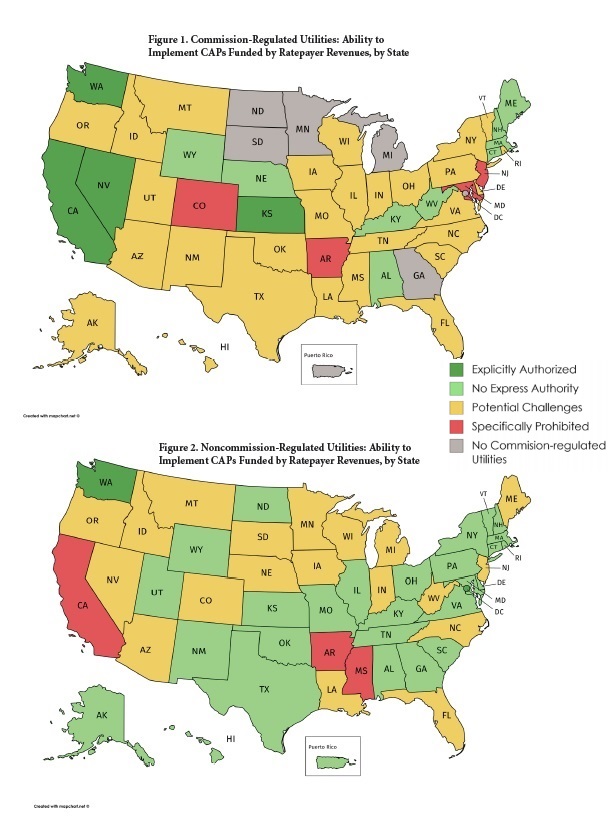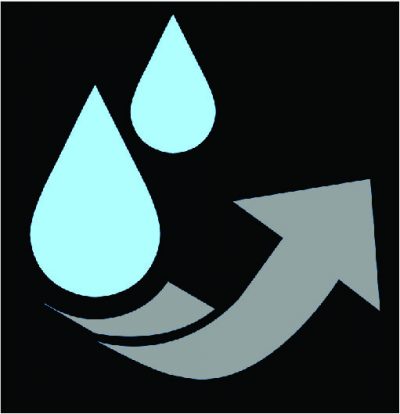“Won’t you pay my bill?” is a question that the water utility asks of the customers who do not pay their water, wastewater, and even stormwater bills. But low-income customers are, essentially, asking the same question: will you—higher-income customers—help pay the water bills of the poor?
National organizations like the American Water Works Association have policies related to non-payment. AWWA says “[f]ailure on the part of the customer to pay a water bill for services rendered necessitates that other customers bear the costs associated with the non‐payment of water service.”
But is it worth it to the water utility to use the rate revenues from one group of customers to subsidize the rates of another group of customers via an assistance program? More than that, is it even legal?
Our recently released report, Navigating Legal Pathways to Rate-Funded Customer Assistance Programs, shows that the answer to the question on cross-subsidization based on income depends on the state. It also depends on the type of utility within the given state. This report attempts to facilitate planning by providing water utilities with a snapshot of the legal landscape in all 50 states, the District of Columbia, and Puerto Rico.
For good reason, the term “cross-subsidization” does not sit well with some water professionals. After all, a primary goal of rate setting is that customers pay their fair share of what it costs the water system to serve them. But from one perspective, cross subsidies happen all the time. They happen because the Smiths live only 3 miles from the water plant, while the Patels live 10 miles from the plant: it costs more to serve customers the further they live from the plant, but these two families will be charged the same price per unit of water. Or the Jones use enough water to reach the third tier of the increasing block rate structure, while the retired couple next door to them use so little water that their bill remains within the consumption allowance of the base charge of the utility bill: many utilities deliberately underprice the first couple thousand gallons of water.
Even though some types of cross-subsidizations may be standard practice, specifically using rate revenues from one group of customers to subsidize the bills of low-income customers may not be legal in your state. The fact is, only a couple of states explicitly authorize this. A handful of states specifically prohibit using rate revenues to fund low-income assistance programs in this way. Chances are that your utility falls somewhere in the gray area. If your utility is regulated by your state’s utility commission, then your chances for clarity on this question are a little higher. The maps below show that in Washington State, utilities have the green light to fund CAPs from rate revenues. To a lesser extent, states such as Kansas, Kentucky, and Nevada, have made it clear that at least some types of water and wastewater utilities can use rate revenues to fund CAPs. Figures 1 and 2 illustrate the level of authorization in each state to provide rate-funded CAPs.

For the interactive version of these maps, complete with summaries of each state and nine case studies, click here.
If your utility operates in one of the many states where it is unclear as to whether you can use rate revenues to fund a CAP, there are a few options to consider:
- Option 1: Use your political sway to get changes made at the state level. Get statutory language approved that addresses funding for affordability programs in clear, unambiguous terms
- Option 2: Prove that your CAP already conforms to the ambiguous state statutes. The unclear language at the state level that most utilities need to wade through in regard to funding CAPs has created a lot of perceptions that rate revenues are off limits. But, instead of presenting the CAP as a subsidized rate class, many utilities are couching their CAPs as an essential cost of running a utility that provides financial benefits to all customers.
- Option 3: If rate revenues are totally off the table, then the utility can consider other funding sources. Volunteer bill round-up programs, charitable donations, proceeds from service line insurance programs, and revenues from leasing tower space to cell phone companies are all examples of sources that utilities have used to fund assistance programs for their low-income customers.
But this third option is a bit of a cop-out, since CAPs funded by anything but rate revenues seem to come up short in terms of meeting the total need of the low-income population in many water utilities. With per capita water use decreasing, and decades of infrastructure upgrades to catch up on, water rates should keep on rising. But this will exacerbate the affordability problem. Why not fund affordability programs in the same way that utilities fund their other important projects and programs—through rate revenues?


